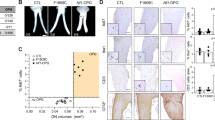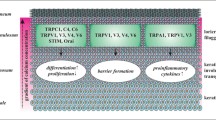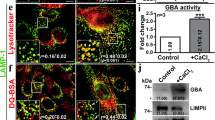Abstract
Capacitative calcium entry and calcium wave propagation were studied in keratinocytes from healthy volunteers and patients with type 1 neurofibromatosis (NF1) in calcium-depleted and in low calcium culture medium. In previous studies, we found evidence that mutations of the NF1 tumor suppressor gene can lead to altered calcium-mediated cell signaling in keratinocytes cultured in the presence of a high extracellular calcium concentration. The present study demonstrated that the differences between normal and NF1 keratinocytes were dependent on extracellular calcium concentration. Specifically, when keratinocytes were exposed to thapsigargin under calcium-depleted culture conditions the subsequent increase in free intracellular calcium concentration was moderate in NF1 keratinocytes compared to controls. The finding indicates lowered endoplasmic calcium stores in NF1 which may also in part explain the reduced activation signal for capacitative calcium influx and the wound-induced intracellular Ca2+ transient observed in NF1 keratinocytes maintained in culture medium containing 0.05 mM calcium. The differences between control and NF1 keratinocytes were most pronounced when the cells were cultured in the presence of a high (1.8 mM) calcium concentration. Since elevated extracellular calcium levels induce keratinocytes to form cellular contacts and lead to terminal differentiation, markedly aberrant responses of NF1 keratinocytes in the presence of a high calcium concentration may help to explain previous findings on impaired formation of cellular junctions and differentiation in NF1 deficient cells.


Similar content being viewed by others
References
Lodish H, Berk A, Zipursky SL, Matsudaira P, Baltimore D, Darnell J (2000) Molecular cell biology, 2nd printing. WH Freeman, New York
Xia S-L, Ferrier J (1992) Propagation of a calcium pulse between osteoblastic cells. Biochem Biophys Res Commun 186:1212–1219
Charles AC, Kodali SK, Tyndale RF (1996) Intercellular calcium waves in neurons. Mol Cell Neurosci 7:337–353
Young SH, Ennes HS, Mayer EA (1996) Propagation of calcium waves between colonic smooth muscle cells in culture. Cell Calcium 20:257–271
Clapham DE (1995) Intracellular calcium. Replenishing the stores. Nature 375:634–635
Clapham DE (1995) Calcium signaling. Cell 80:259–268
Putney JW Jr (1999) “Kissin’ cousins”: intimate plasma membrane-ER interactions underlie capacitative calcium entry. Cell 99:5–8
Hu Z, Bonifas JM, Beech J, Bench G, Shigihara T, Owawa H, Ikeda S, Mauro T, Epstein EH Jr (2000) Mutations in ATP2C1, encoding a calcium pump, cause Hailey-Hailey disease. Nat Genet 24:61–65
Sudbrak R, Brown J, Dobson-Stone C, Carter S, Ramser J, White J, Healy E, Dissanayake M, Larregue M, Perrussel M, Lehrach H, Munro CS, Stachan T, Burge S, Hovnanian A, Monaco AP (2000) Hailey-Hailey disease is caused by mutations in ATP2C1 encoding a novel Ca(2+) pump. Hum Mol Genet 9:1131–1140
Putney JW Jr (1986) A model for receptor-regulated calcium entry. Cell Calcium 7:1–12
Putney JW Jr (1990) Capacitative calcium entry revisited. Cell Calcium 11:611–624
Berridge MJ, Irvine RF (1984) Inositol trisphosphate, a novel second messenger in cellular signal transduction. Nature 312:315–321
Pietrobon D, Di Virgilio F, Pozzan T (1990) Structural and functional aspects of calcium homeostasis in eukaryotic cells. Eur J Biochem 193:599–622
Parekh AB, Penner RAB (1997) Store depletion and calcium influx. Physiol Rev 77:901–930
Ma H-T, Patterson RL, van Rossum DB, Birnbaumer L, Mikoshiba K, Gill DL (2000) Requirement of the inositol trisphosphate receptor for activation of store-operated Ca2+ channels. Science 287:1647–1651
Putney JW Jr (2001) Pharmacology of capacitative calcium entry. Mol Interv 2:84–94
Putney JW Jr (2004) Store-operated calcium channels: how do we measure them, and why do we care? Sci STKE 243:pe37
Putney JW Jr, Bird GS (1993) The signal for capacitative calcium entry. Cell 75:199–201
Gutmann DH, Wood DL, Collins FS (1991) Identification of the neurofibromatosis type 1 gene product. Proc Natl Acad Sci U S A 88:9658–9662
Gutmann DH, Aylsworth A, Carey JC, Korf B, Marks J, Pyeritz RE, Rubenstein A, Viskochil D (1997) The diagnostic evaluation and multidisciplinary management of neurofibromatosis 1 and neurofibromatosis 2. JAMA 278:51–57
Marchuk DA, Saulino AM, Tavakkol R, Swaroop M, Wallace MR, Andersen LB, Mitchell AL, Gutmann DH, Boguski M, Collins FS (1991) cDNA cloning of the type 1 neurofibromatosis gene: complete sequence of the NF1 gene product. Genomics 11:931–940
Riccardi VM (1981) Von Recklinghausen neurofibromatosis. N Engl J Med 305:1617–1627
Evans GR, Scheithauer B, Komminoth P, Peltonen J (2004) Neurofibromatosis 1. In: DeLellis RA, Lloyd RV, Heitz PU, Eng C (eds) WHO classification of tumours. Pathology and genetics: tumours of endocrine organs. Chapter 5: inherited tumour syndromes, pp 243–248
Kuorilehto T, Poyhonen M, Bloigu R, Heikkinen J, Väänänen K, Peltonen J (2004) Decreased bone mineral density and content in neurofibromatosis type 1: lowest local values are located in the load-carrying parts of the body. Osteoporos Int. DOI: 10.1007/s00198-004-1801-4
Legius E, Marchuk DA, Collins FS, Glover TW (1993) Somatic deletion of the neurofibromatosis type 1 gene in a neurofibrosarcoma supports a tumour suppressor gene hypothesis. Nat Genet 3:122–126
Ylä-Outinen H, Aaltonen V, Björkstrand A-S, Hirvonen O, Lakkakorpi J, Vähä-Kreula M, Laato M, Peltonen J (1998) Upregulation of tumor suppressor protein neurofibromin in normal human wound healing and in vitro evidence for platelet derived growth factor (PDGF) and transforming growth factor-beta1 (TGF-beta1) elicited increase in neurofibromin mRNA steady-state levels in dermal fibroblasts. J Invest Dermatol 110:232–237
Atit RP, Crowe MJ, Greenhalgh DG, Wenstrup RJ, Ratner N (1999) The Nf1 tumor suppressor regulates mouse skin wound healing, fibroblast proliferation, and collagen deposited by fibroblasts. J Invest Dermatol 112:835–842
Riccardi VM (2000) Histogenesis control genes and neurofibromatosis 1. Eur J Pediatr 159:475–476
Xu GF, Lin B, Tanaka K, Dunn D, Wood D, Gesteland R, White R, Weiss R, Tamanoi F (1990) The catalytic domain of the neurofibromatosis type 1 gene product stimulates ras GTPase and complements ira mutants of S. cerevisiae. Cell 63:835–841
Basu TN, Gutmann DH, Fletcher JA, Glover TW, Collins FS, Downward J (1992) Aberrant regulation of ras proteins in malignant tumour cells from type 1 neurofibromatosis patients. Nature 356:713–715
Bollag G, McCormick F (1992) Ras regulation NF is enough of GAP. Nature 356:663–664
Koivunen J, Ylä-Outinen H, Korkiamäki T, Karvonen S-L, Poyhonen M, Laato M, Karvonen J, Peltonen S, Peltonen J (2000) New function for NF1 tumor suppressor. J Invest Dermatol 114:473–479
Korkiamäki T, Ylä-Outinen H, Koivunen J, Karvonen S-L, Peltonen J (2002) Mutations of NF1 tumor suppressor gene can lead to altered calcium-mediated cell signaling. Am J Pathol 160:1981–1990
Boyce ST, Ham RG (1985) Cultivation, frozen storage, and clonal growth of normal human keratinocytes in serum free media. J Tissue Cult Methods 9:83–93
Sammak PJ, Hinman LE, Tran POT, Sjaastad MD, Machen TE (1997) How do injured cells communicate with the surviving cell monolayer? J Cell Sci 110:465–475
Kimura H, Oyamada Y, Ohshika H, Mori M, Oyamada M (1995) Reversible inhibition of gap junctional intercellular communication, synchronous contraction, and synchronism of intracellular Ca2+ fluctuation in cultured neonatal rat cardiac myocytes by heptanol. Exp Cell Res 220:348–356
Jørgensen NR, Geist ST, Civitelli R, Steinberg TH (1997) ATP- and gap junction-dependent intercellular calcium signaling in osteoblastic cells. J Cell Biol 139:497–506
Cotrina ML, Lin JH, Alves-Rodrigues A, Liu S, Li J, Azmi-Ghadimi H, Kang J, Naus CC, Nedergaard M (1998) Connexins regulate calcium signaling by controlling ATP release. Proc Natl Acad Sci U S A 95:15735–15740
Grynkiewich G, Poenie M, Tsien RY (1985) A new generation of Ca2+ indicators with greatly improved fluorescence properties. J Biol Chem 260:3440–3450
Bootman MD, Berridge MJ (1995) The elemental principles of calcium signaling. Cell 83:675–678
Thastrup O, Cullen PJ, Drobak BK, Hanley MR, Dawson AP (1990) Thapsigargin, a tumor promoter, discharges intracellular Ca2+ stores by specific inhibition of the endoplasmic reticulum Ca2(+)-ATPase. Proc Natl Acad Sci U S A 87:2466–2470
Acknowledgements
This work was supported by grants from Finnish Cancer Societies, Academy of Finland, Turku University Foundation, Oulu University Hospital (grant H01139), Turku University Central Hospital (grants 11606 and 13338), Paulo Foundation, Emil Aaltonen Foundation, Research Foundation of Farmos, The Cancer Society of Northern Finland, The Finnish Medical Society Duodecim, Finnish Cultural Foundation, Tyyni Tani Foundation, Foundation for Memory of Maud Kuistila, Nona and Kullervo Väre Foundation/Ester Mäkelä Foundation, the Finnish Medical Foundation and the K. Albin Johansson Foundation. We thank Drs. Hannu Rajaniemi, Juha Tuukkanen and Vesa Aaltonen for fruitful discussions. We thank Risto Bloigu, Mika Kihlström, Liisa Kärki, Seija Leskelä and Eero Oja for expert technical assistance.
Author information
Authors and Affiliations
Corresponding author
Additional information
Authors’ contributions
Timo Korkiamäki study design, data collection, statistical analysis, data interpretation, manuscript preparation, literature search, collection of funds; Heli Ylä-Outinen study design, data collection, data interpretation, manuscript preparation, collection of funds; Pekka Leinonen data interpretation, manuscript preparation; Jussi Koivunen study design, data interpretation, collection of funds; Juha Peltonen study design, data interpretation, manuscript preparation, collection of funds.
Rights and permissions
About this article
Cite this article
Korkiamäki, T., Ylä-Outinen, H., Leinonen, P. et al. The effect of extracellular calcium concentration on calcium-mediated cell signaling in NF1 tumor suppressor-deficient keratinocytes. Arch Dermatol Res 296, 465–472 (2005). https://doi.org/10.1007/s00403-004-0538-4
Received:
Revised:
Accepted:
Published:
Issue Date:
DOI: https://doi.org/10.1007/s00403-004-0538-4




